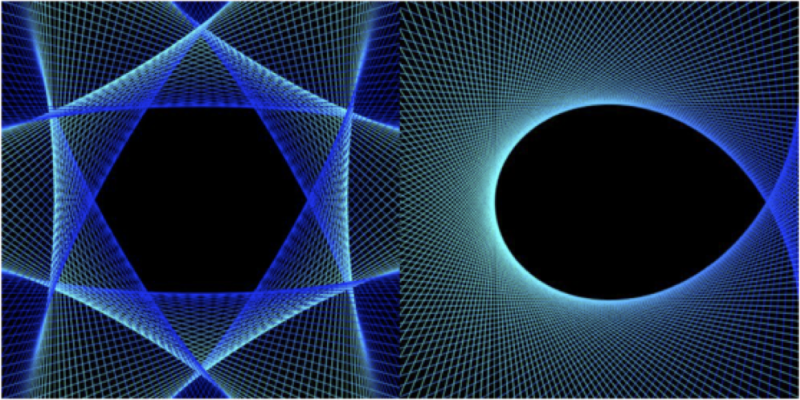Two-dimensional Wulff Construction for a faceted crystal (left) and a magnetic bubble (right). The dark, unfilled area is the predicted shape. Credit: Carnegie Mellon University College of Engineering.
When it comes to computers, people never look for "bigger and better," but rather "smaller and faster." How do we continue to keep up with that demand, making technology smaller, faster, and more energy-efficient? According to Carnegie Mellon University's Vincent Sokalski, assistant research professor of materials science and engineering, the answer may be in the fundamental origins of magnets—the spin of electrons.
Sokalski and his group studied the interaction of electron spins in magnetic materials poised for use in next-generation cellphones and computers and discovered how to better measure and predict the changing magnetic state of those materials. This new understanding, recently published in Physical Review B, is exciting for the future of computing technology because it will allow scientists to explore and develop materials that are more energy-efficient and faster than traditional semiconductor-based materials.
To come to this new understanding, Sokalski and his group leveraged the power of a 19th century mathematical technique called the "Wulff Construction," traditionally used by mineralogists and crystallographers to study the formation of gemstone facets. They uniquely applied this technique to small magnetic bubbles found in the materials they studied.
For more information, please view this short research video or read the full article.
More information: Energetic molding of chiral magnetic bubbles, arXiv:1604.02999 [cond-mat.mtrl-sci] arXiv:1604.02999 [cond-mat.mtrl-sci]
Journal information: Physical Review B
























